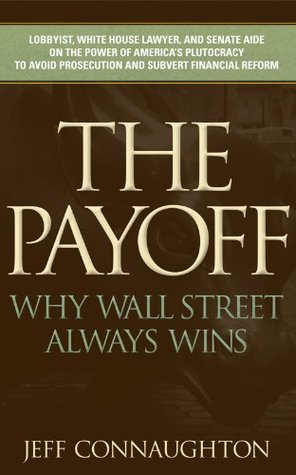Kindle Notes & Highlights
After the S&L crisis, the FBI had had 1,000 agents and analysts working on twenty-seven strike forces to target criminal activity. At the time of this hearing, Pistole said, the FBI had only 240 agents targeting financial fraud. And the fraud potentially involved in the current financial crisis, Pistole said, “dwarfs” that of the S&L crisis.
“Jews, labor unions, and trial lawyers” as the financial pillars of the Democratic Party. Soon I learned to add Hollywood and Wall Street to that list.)
As the pundits said, the Kennedys quoted the Greeks; Biden quoted the Kennedys. To be fair, the Kennedy legacy was tough to compete with.
William Black, an economics and law professor at University of Missouri at Kansas City who played a key role in the prosecutions that followed the S&L crisis, had predicted this problem: the fear that targeting banks could cause them to collapse and further damage the economy.
the SEC should’ve played a leading role in crafting the standards in the bill. Instead, Congress was bullying the SEC chairman to support legislation slanted toward the interests of a corporate coalition that had raised millions of dollars for members of the House and Senate.
The money spent by corporations to influence Washington at least tripled in my twelve years as a lobbyist. In 1997, when I started, politically active organizations reported $1.26 billion in direct lobbying expenses. When I left to rejoin government in 2009, that figure had increased to $3.47 billion. Controlling for inflation, that’s almost seven times the estimated $200 million in lobbying expenses reported in 1983.
One practice is referred to as dark pools. In dark pools, big institutional investors trade large blocks of shares with each other. Because these transactions are private, they don’t reveal big investors’ trading strategies to the broader (or, to continue the metaphor, “lit”) market. That’s their attraction. Dark pools have flourished. In 2004, there were eighteen dark pools comprising 1.5 percent of the market’s volume. By 2009, there were over fifty comprising 12 percent of the volume. Altogether, off-market trading—in dark pools or internally at broker-dealers—accounts for nearly one
...more


